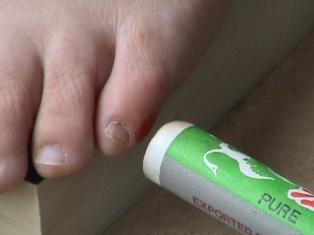Breech Babies
- Details
- Published on Thursday, 22 September 2011 11:41
- Written by Administrator
Breech Babies
If the baby settles into a breech (bottom first) position in the later part of the pregnancy it will more than likely mean a caesarean delivery. This exercise, done 3 times each day for 15 minutes discourages the baby from engaging bottom first into the pelvis.
Exercises to encourage baby to turn
- Lie on your back, with your bottom away from the wall. Place the feet high on the wall, and using it for support, lift your hips high. Have pillows or a firmly rolled towel ready to slip behind your back for support. Your hips need to be higher than your shoulders.
- An alternative is to adopt a "knee-chest" position, with your bottom high in the air and your head and chest on the floor.
External Cephalic Version (ECV)
Research indicates that manually massaging the baby into a better position is often successful for turning breech babies if done around 39 weeks. You will need to find a caregiver skilled in this procedure, you wil be given a drug called Ventolin to reduce the sensitivity of the uterus while it is being done. As there is always a very slight risk that the cord will become entangled or the placenta starts to separate as the baby is turned, external cephalic version will always be done in a hospital, where a Caesarean section is available in the unlikely event of such an emergency.
Using moxibustion to encourage the baby to turn by itself
A very successful "do it yourself" technique with a proven high success rate is to use locally applied heat treatment.
The heat from burning moxa sticks can also be used to stimulate the baby's movements and encourage it to turn. These sticks, shaped like cigars, are available from herbalists, Chinese medicine stockists and some acupuncturists (who use moxa sticks for other purposes) and they contain tightly rolled dried leaves of the mugwort plant. They are very inexpensive and two sticks will be needed - they can be used several times.

Sit on a chair and place each foot on a book with your little toes hanging over the edge. Place each stick on another book with the tip in the gap.

Light the sticks (they burn with no flame but an intense heat and pungent smell) and position the hot tip as close as possible to the outside of each little toe, with the heat directed at the point just above the toe nail. Leave in place for 20 minutes. Be careful not to touch the skin as you will burn yourself. The heat should be as strong as you can tolerate, for the best effect.

After a few minutes, you will notice the baby begin to kick and move. The primary aim of the moxibustion treatment is to encourage the baby to move around and thus increase the effect of gravity which will help the heaviest part of the baby (its head) to turn over and enter into the pelvis.
This simple treatment is best done just before bed, starting at 34 - 36 weeks. It takes several hours for the baby to turn, and this will be easier if you are lying down, because the baby will not be sitting as firmly into the pelvis. Continue over several nights, or until the baby has turned itself.
A randomised controlled trial (see below) indicates that at approximately 70% of breech babies will turn using this method. If the baby does not turn from its breech position, external cephalic version should be attempted just before labour begins. Further information can be found in the Cochrane Library.
If, after trying the moxibustion and/or external cephalic version, the baby does not move into a head down position, there may be a good reason why the baby prefers to remain in the breech position -perhaps the placenta is positioned low down, limiting the space for the baby's head in the lower part of the uterus or the uterus itself is shaped unusually and is restricting the baby's movements. If the baby does not turn easily, then it must be assumed that the baby needs to stay where it is, and options for the birth (either by caesarean or vaginally) will need to be considered.
Giving birth to a breech baby
Today, women will be advised to have a Caesarean section for the birth of their breech baby, especially if it their first child. Although Caesarean section carries its own risks and requires time to recover from the surgery afterwards, this may be the only option available, especially if your caregiver has little or no experience of vaginal breech birth.
Your chances of a safe vaginal birth will be increased if this is not your first baby, you have a small baby, you are carrying twins (twins are usually much smaller than singleton babies), you have given birth vaginally to a breech baby before, you labour without an epidural or an induction and you remain upright and mobile during the labour and birth. A caregiver who is familiar with breech birth and confident of their practice will also make this option much more successful.
If you decide to accept a Caesarean birth, it is usually performed at 39 weeks, If you labour before the operation it will benefit your baby as this will give the baby the benefits of the labour contractions, which are important for the final maturation of the baby's lungs in readiness for breathing on its own.





